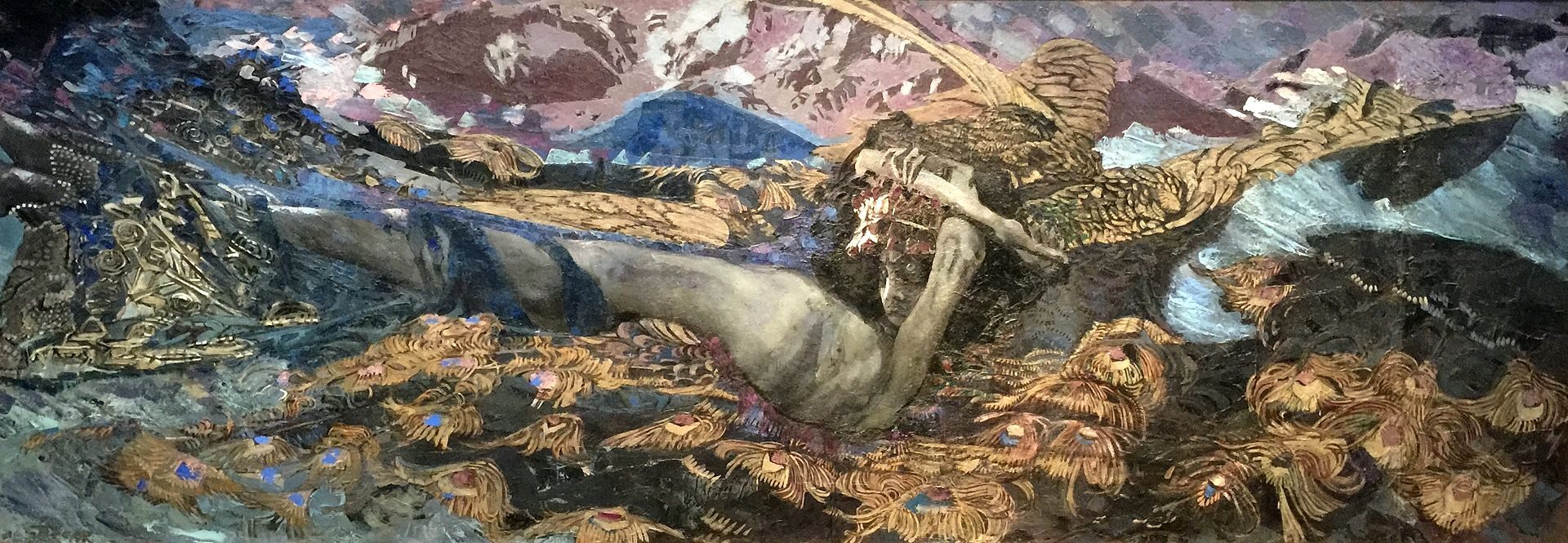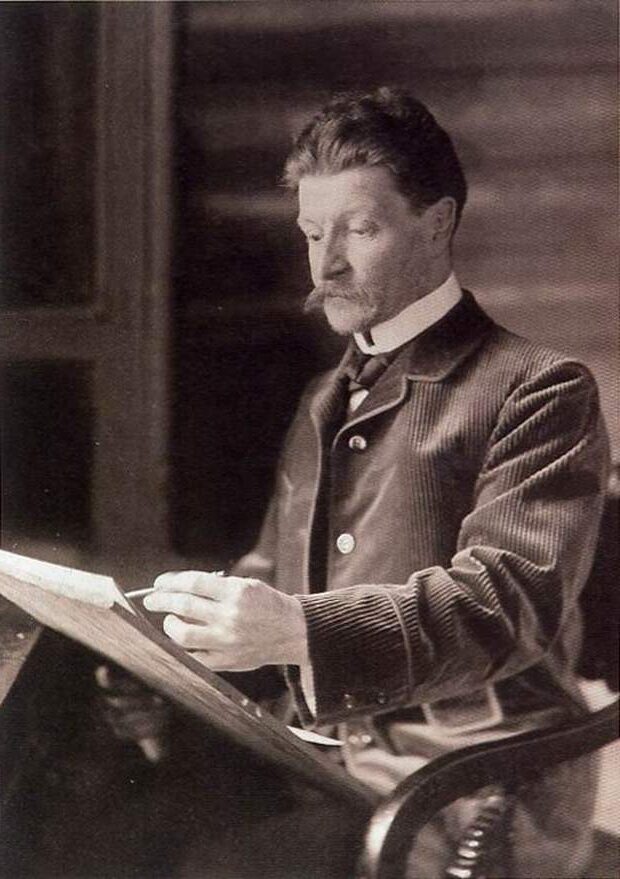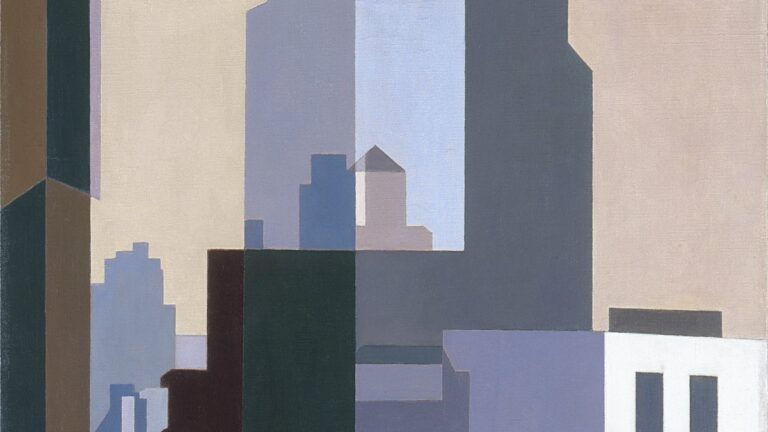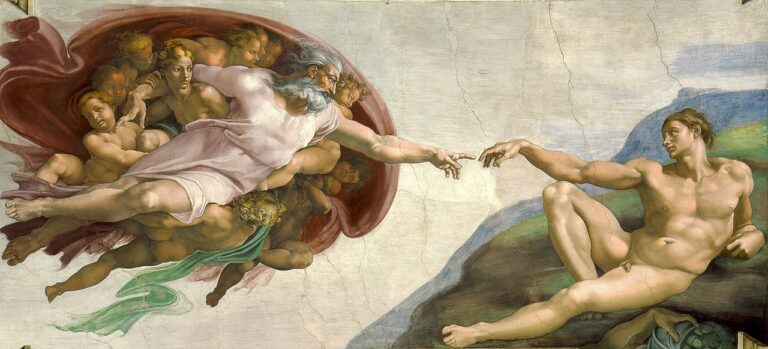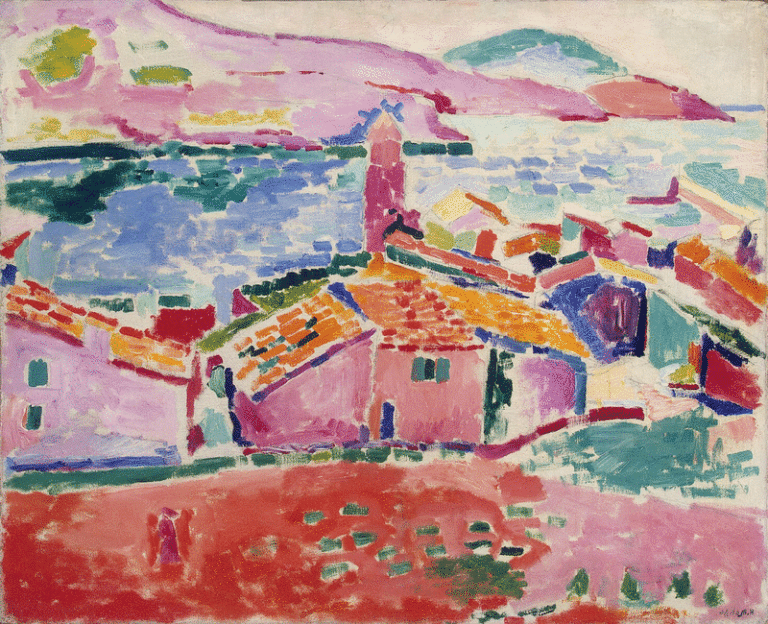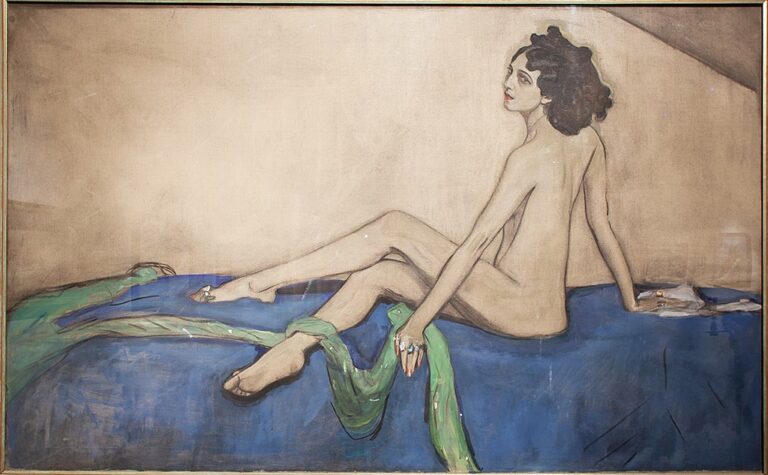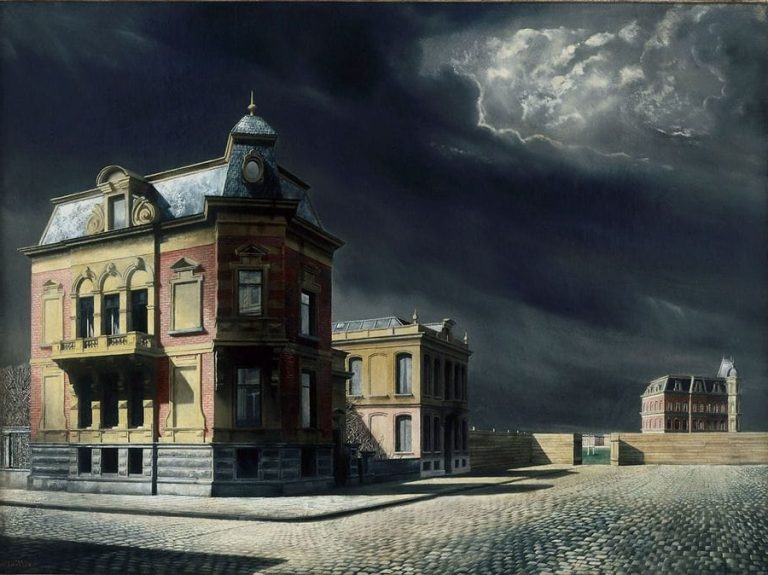Mikhail Vrubel Painter: The Revolutionary Symbolist Who Transformed Russian Art
Born: March 17, 1856, Omsk, Russian Empire
Death: April 14, 1910, Saint Petersburg, Russian Empire
Mouvement artistique : Symbolisme
Nationalité : Russe
Teacher: Pavel Chistyakov
Institution : Académie impériale des arts
Mikhail Vrubel Painter: The Revolutionary Symbolist Who Transformed Russian Art
Life and Career of Mikhail Vrubel
Mikhail Aleksandrovich Vrubel (1856-1910) led a remarkable yet troubled life as one of Russia’s most innovative artists. His artistic journey took him from academic studies to pioneering modernist works that broke with tradition while exploring mystical and symbolic themes.
Vie et éducation précoces
Born in Omsk, Siberia in 1856, Vrubel spent his childhood moving throughout Russia due to his father’s military career. This nomadic upbringing exposed him to diverse cultural influences from an early age.
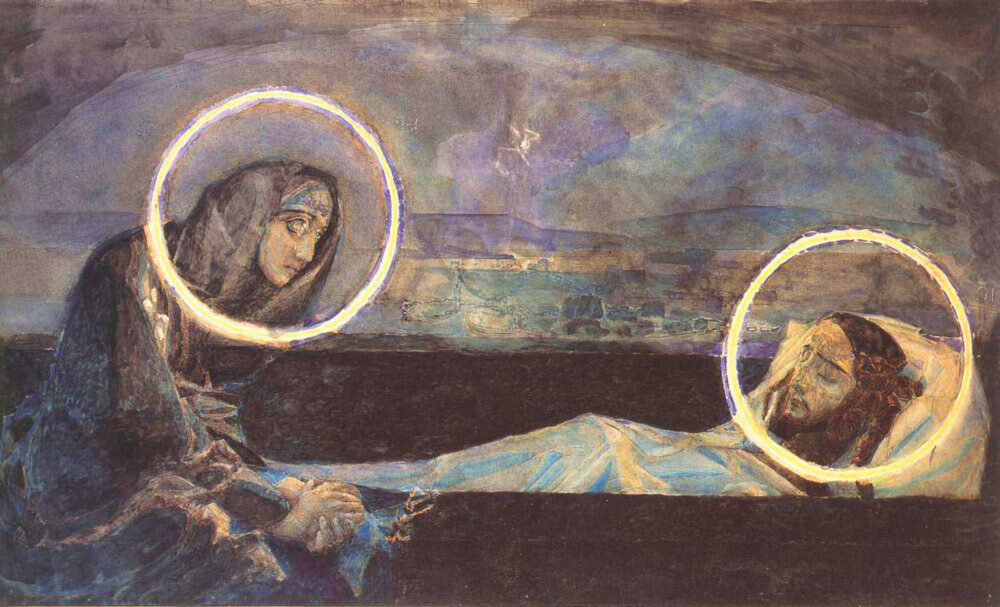
Tombstone Crying, the second version, 1887, by Mikhail Vrubel
Initially, Vrubel followed a conventional path, enrolling at the Faculty of Law at St. Petersburg University in 1874. However, his artistic talents soon became apparent, and after completing his law studies, he changed direction.
In 1880, Vrubel entered the Academy of Arts in St. Petersburg, where he found great satisfaction in his studies. In his 1901 autobiography, he described his Academy years as “the happiest in his life as an artist.”
Under the guidance of professor Pavel Chistyakov, Vrubel developed exceptional technical skills in drawing and composition while displaying an independent creative vision that would define his career.
Développement artistique et influences
Vrubel’s artistic style evolved dramatically after his academic training. He rejected traditional approaches in favor of a distinctive personal vision characterized by fragmented forms and brilliant colors.
His works showed influences from Byzantine mosaics, Russian folklore, and European Symbolism. Vrubel’s fascination with mythological and literary themes became a hallmark of his creative output.
One of his most famous subjects was the Demon figure, inspired by Mikhail Lermontov’s poem. This recurring character represented Vrubel’s exploration of the spiritual and psychological realms.
His innovative techniques included applying paint in distinctive crystal-like facets, creating a mosaic-like effect that gave his works a distinctive shimmering quality. This approach distinguished him from his contemporaries and influenced later modernist movements.
Collaboration with Savva Mamontov and Private Opera
In the 1890s, Vrubel formed a crucial partnership with Savva Mamontov, a wealthy industrialist and arts patron. This relationship provided financial support and creative freedom during a productive period.
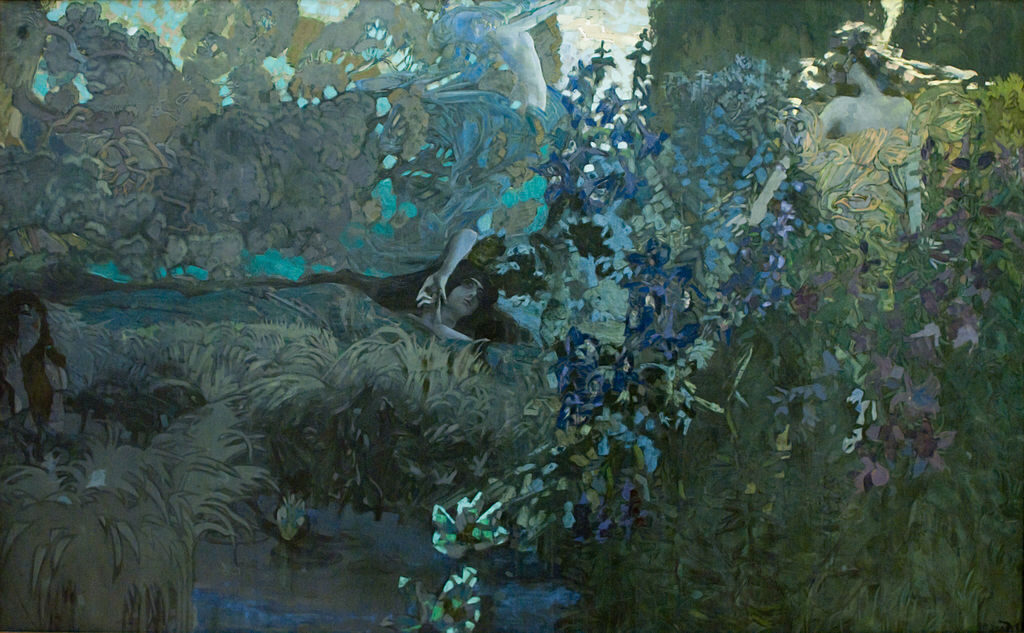
Morning, 1897, by Mikhail Vrubel
Mamontov’s private estate at Abramtsevo became an artistic colony where Vrubel created ceramics, architectural decorations, and furniture designs. This multidisciplinary approach expanded his creative range beyond painting.
His work with Mamontov’s Private Opera proved especially significant. Vrubel designed stunning theatrical sets and costumes for productions including “Sadko” and “The Snow Maiden.”
One of his most renowned theatrical works was “Tamara in the Coffin,” a dramatic scene that showcased his ability to blend mysticism with theatrical spectacle. These designs revealed Vrubel’s extraordinary imagination and technical versatility.
Marriage to Nadezhda Zabela and Personal Life
In 1896, Vrubel married Nadezhda Zabela, a talented opera singer who performed with Mamontov’s Private Opera. Their relationship deeply influenced his later artistic themes and subjects.
Vrubel frequently portrayed his wife in his paintings, creating idealized images of her as characters from the operas in which she performed. These portraits stand among his most tender and personal works.
The couple had a son in 1901, but tragedy struck when the child died at age two. This profound loss triggered a severe mental breakdown in Vrubel, who was already struggling with depression.
His final years were marked by declining health and periods of institutionalization. Vrubel continued to create art despite losing his eyesight in 1906. He died in 1910, leaving behind a remarkable legacy that bridged traditional Russian art and modern experimentation.
Contributions artistiques et style
Mikhail Vrubel’s distinctive artistic style blended Symbolism with Art Nouveau elements, creating works that stood apart from his contemporaries. His unique approach to form, color, and subject matter established him as one of Russia’s most innovative artists during the late 19th and early 20th centuries.
Principales œuvres et séries
The Demon Series represents Vrubel’s most recognized achievement. The Demon Seated (1890) depicts a melancholic figure surrounded by flowers, while “Demon Downcast” (1902) shows the same character in a state of anguish and defeat. These works explored spiritual and psychological themes through haunting imagery.
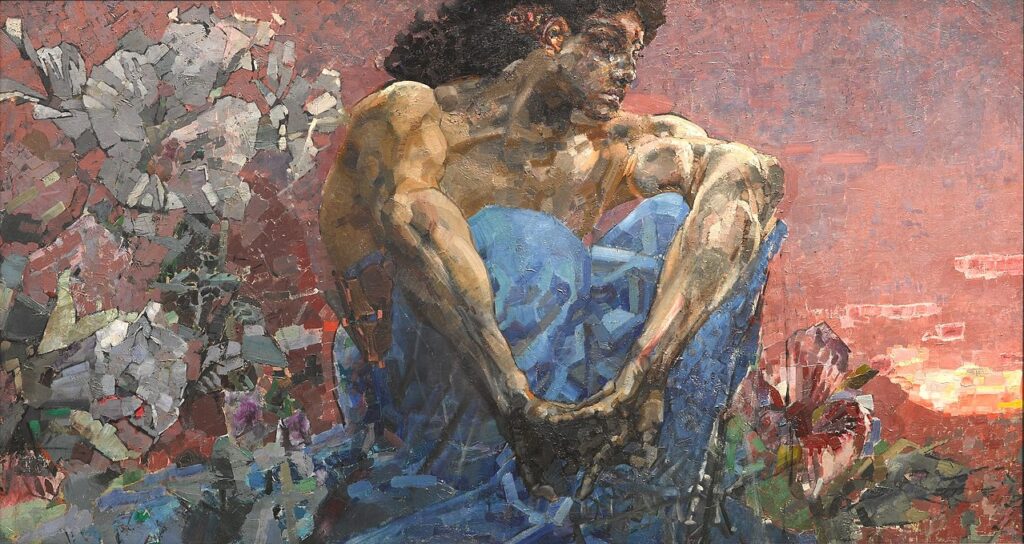
The Demon Seated, 1890, by Mikhail Vrubel
His “Six-Winged Seraph” (1904) demonstrated his interest in religious iconography with a modernist interpretation. “The Swan Princess” (1900) captured fairy tale elements with luminous, crystalline surfaces.
“The Snow Maiden” and “Sadko” reflect Vrubel’s fascination with Russian folklore and mythology. These paintings show his ability to transform traditional stories into visually striking compositions.
“Pan” (1899) reveals his interest in classical mythology, portrayed with mysterious, forest-dwelling imagery that blends the natural and supernatural worlds.
Innovation and Techniques
Vrubel approached painting as a decorative surface. He developed a distinctive “crystalline” technique where forms appear fragmented, like pieces of stained glass or mosaic tiles. This approach created vibrant, textured surfaces.
His time studying in Italy, particularly Venice, influenced his use of color and form. Vrubel incorporated Byzantine traditions with modern techniques, creating an original visual language.
Beyond painting, he worked in multiple media. His mosaics, frescoes, and ceramics all carried his distinctive style. His work on “Pearl Mussel” showcased his decorative sensibilities and innovative approach to color.
His stage designs for theater productions demonstrated versatility and an ability to create immersive visual environments. These designs translated his painterly vision into three-dimensional spaces.
Influence on Russian Art and Art Nouveau
Vrubel was among the first Russian painters to explore Art Nouveau concepts. He helped introduce Symbolism to Russian visual art at a time when traditional academic styles dominated.
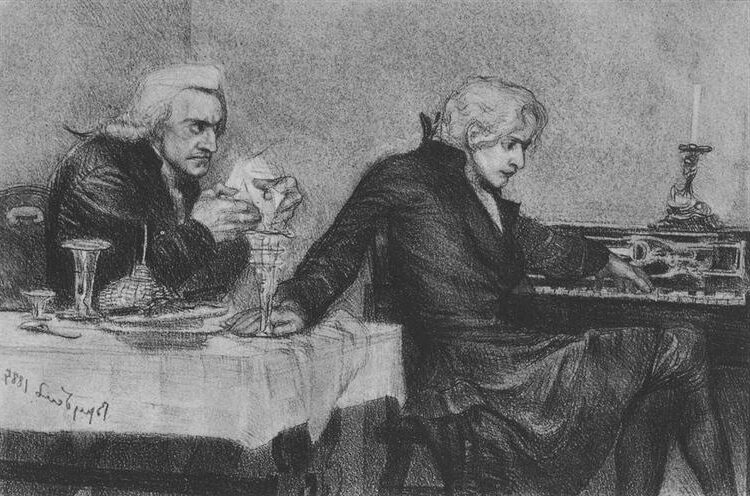
Salieri Pours Poison into Mozart’s Glass, 1884, by Mikhail Vrubel
His work influenced the World of Art group and subsequent generations of Russian artists. His willingness to break from tradition opened paths for experimentation in Russian painting.
Unlike Western Art Nouveau artists, Vrubel fused the style with distinctly Russian elements. He incorporated Byzantine, folk, and religious imagery into his modern approach.
His technical innovations impacted how later artists thought about surface, texture, and color. Many modernist Russian painters acknowledged Vrubel’s pioneering role in breaking with traditional representation.
Despite periods of critical rejection, his work eventually gained recognition as foundational to Russian modernism. Today, his contributions are seen as essential to understanding the development of 20th-century Russian art.
Héritage et influence
Mikhail Vrubel’s artistic vision continues to resonate through museums, literature, and broader cultural spheres. His innovative techniques and mystical themes established him as a pivotal figure in Russian art history who bridged traditional and modern artistic movements.
Representation in Galleries and Museums
The State Tretyakov Gallery in Moscow houses the largest collection of Vrubel’s works, including his famous “Demon Seated” and “Demon Downcast” paintings. These pieces remain among the gallery’s most visited attractions, drawing art enthusiasts from around the world.
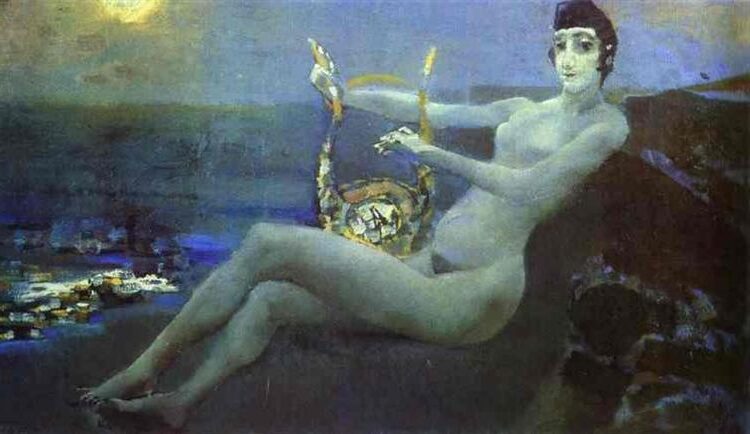
Sappho, c.1885, by Mikhail Vrubel
Vrubel’s works created during his time at the Abramtsevo Colony show his experimentation with folk art and decorative elements. This artistic community near Moscow proved crucial for his development and these pieces are now preserved in several Russian museums.
International recognition came through exhibitions in Venice and other European cities, though his most comprehensive collections remain in Russian institutions. The Russian Museum in St. Petersburg maintains significant holdings of his paintings, sculptures, and drawings.
Impact on Literature and Performing Arts
Vrubel’s artistic interpretations of literary works, particularly his illustrations of Mikhail Lermontov’s “Demon,” created a visual language that influenced later writers. His imagery became intertwined with how Russians visualized these narrative works.
The symbolist poet Valery Bryusov specifically referenced Vrubel in his writings, seeing in the painter a kindred artistic spirit. This cross-medium influence highlights how Vrubel’s visual language transcended painting.
His designs for theater productions, including his work on productions of “Hamlet,” brought his distinctive style to performing arts. These theatrical designs demonstrated his ability to translate his visual aesthetic to different media.
Cultural and Artistic Relevance
Vrubel’s work prefigured Art Nouveau with its decorative elements and flowing forms, though his style remained distinctly personal. His technical innovations in texture and color application influenced generations of Russian artists.
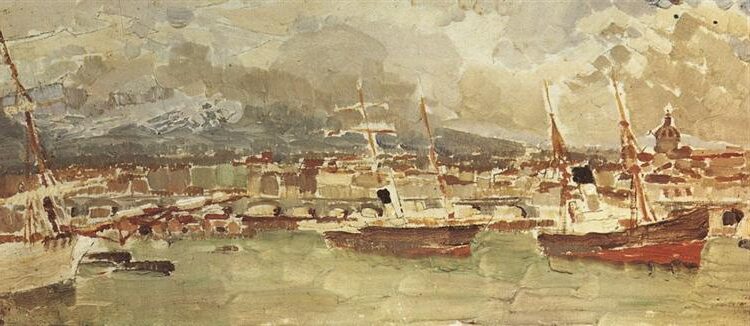
Catania, Sicily, 1894, by Mikhail Vrubel
His struggles with mental health became intertwined with his artistic legacy, similar to Vincent van Gogh in Western art. The intense emotion and psychological depth in works like “Demon Downcast” have been linked to his personal struggles.
Contemporary artists continue to reference Vrubel’s distinctive fragmented brushwork and mystical themes. His ability to blend reality and fantasy created a uniquely Russian contribution to symbolist art that maintains relevance in modern artistic discourse.
Questions fréquemment posées
Mikhail Vrubel stands as one of Russia’s most innovative artists who challenged traditional artistic norms. His unique vision, technical mastery, and personal struggles shaped his distinctive body of work that continues to fascinate art lovers today.
What are the most notable works of Mikhail Vrubel?
“The Demon Seated” (1890) remains Vrubel’s most iconic creation, depicting a melancholic supernatural being in a striking fragmented style. This painting established his reputation and became part of his larger Demon series.
“The Swan Princess” (1900) showcases his fascination with fairy tales and features his wife Nadezhda as the model. The luminous quality and fantastical elements in this work exemplify his symbolic approach.
His “Lilacs” (1900) demonstrates his ability to transform an ordinary subject into something mystical through his unique mosaic-like brushwork and color sensibility.
How did Mikhail Vrubel contribute to the art movement of his time?
Vrubel pioneered Russian Symbolism, breaking away from academic traditions when such departures were considered radical. His work bridged traditional Russian art with modernist approaches emerging in Europe.
He integrated elements of Byzantine art, medieval Russian iconography, and Art Nouveau into a distinctive personal style. This synthesis created a new visual language in Russian art.
Many critics initially misunderstood his innovative techniques and subject matter. Only later was he recognized as a visionary who helped usher Russian art into the modern era.
Can you describe the personal life and influences of Mikhail Vrubel?
Born in 1856, Vrubel began his artistic career relatively late, only in the 1880s after initially studying law. His father was a military officer, which led to frequent relocations during his childhood.
Literature profoundly influenced his work, particularly the writings of Mikhail Lermontov whose poem “The Demon” inspired Vrubel’s most famous series. Russian fairy tales and mythology also provided rich material for his artistic vision.
Vrubel struggled with mental illness in his later years, experiencing hallucinations and eventually being hospitalized. He developed blindness before his death in 1910, adding a tragic dimension to his artistic legacy.
What techniques and styles is Mikhail Vrubel known for?
Vrubel developed a distinctive “crystalline” technique where he built images from small, faceted brush strokes resembling mosaics or stained glass. This approach created a shimmering, vibrant surface quality unique to his work.
He mastered multiple media including oil painting, watercolor, ceramics, and architectural decorations. This versatility allowed him to express his vision across different artistic forms.
His color palette was often intense and symbolic rather than naturalistic. He used color to convey emotional and spiritual qualities rather than merely depicting physical reality.
In what ways did Mikhail Vrubel’s spouse, Nadezhda Zabela-Vrubel, impact his art?
Nadezhda Zabela-Vrubel, a prominent opera singer, became Vrubel’s wife in 1896 and frequently appeared as a model in his paintings. Her features are recognizable in works like “The Swan Princess” and “After the Concert.”
Her connections to the theater and opera world provided Vrubel with opportunities to design stage sets and costumes. This theatrical work influenced the dramatic qualities evident in his paintings.
Their relationship inspired some of his most tender and intimate works during a period when his art otherwise explored darker, more troubled themes.
What was Mikhail Vrubel’s relationship with other Russian artists, such as Viktor Vasnetsov?
Vrubel worked alongside Viktor Vasnetsov on church murals at St. Cyril’s Church in Kyiv. Their artistic approaches differed significantly. Vasnetsov pursued a more traditional national style while Vrubel developed a more experimental approach.
Despite his avant-garde tendencies, Vrubel maintained connections with the Abramtsevo artist colony. Many leading Russian artists gathered there to explore national themes in art.
His work influenced younger Russian artists like the Blue Rose group. They further developed symbolist tendencies in Russian art. While initially controversial, he eventually gained recognition among his artistic peers.

